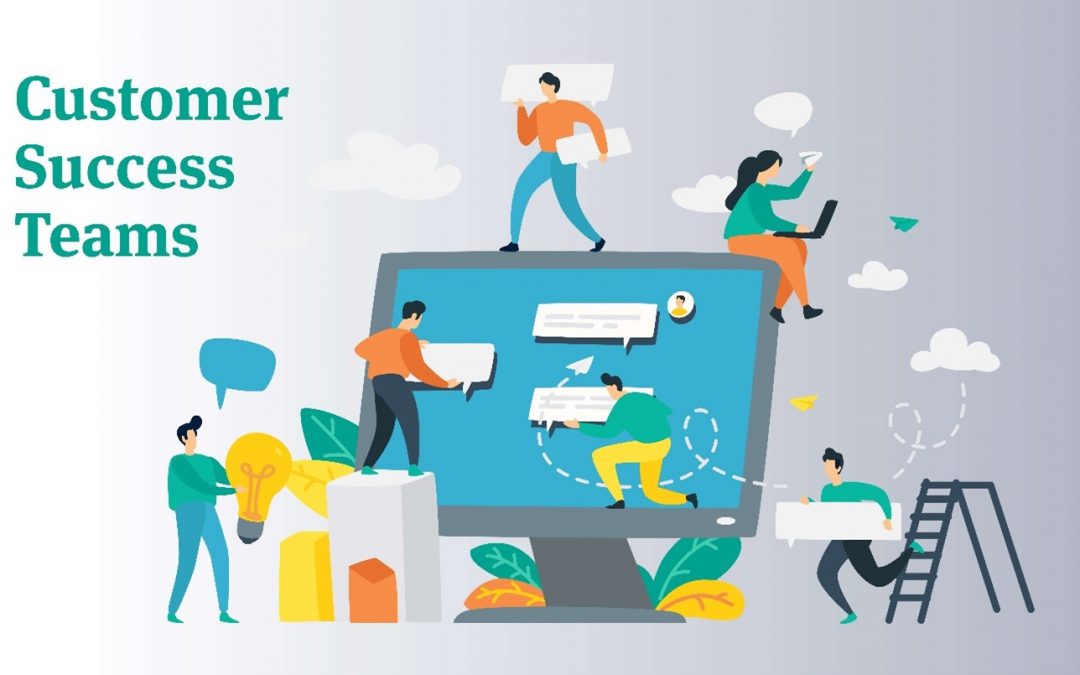
by Tera Jewell | Jul 24, 2024 | Art of Sales Weekly, Featured
Getting unstuck
I work with distributors that know they need to move forward on their digital journey but can’t seem to get to the next step. Others want to add another branch store. They can’t decide on a location, when to add additional personnel, or where to find the right people. How often have you wasted time on a big project that never got completed?
It is often a problem to move forward, before you identify the “Who” you need to make sure you are invested in achieving well defined goals. Dr. Benjamin Hardy, an organizational psychologist and bestselling author, states: “Who can help me achieve, may be a stretch, if you’ve never truly committed to huge goals.”
Choosing a Who
In their book, Who Not How, Dan Sullivan and Benjamin Hardy suggest the formula for achieving bigger goals is to aggressively use teamwork. They ask, “Do you have “Whos” that give you the perspectives, resources, and ability to go beyond what you could do alone?” To reach a higher level of achievement you need many people in your life to help solve problems.
Recently, a third-generation distributor/owner contacted me for help. His grandfather and father had built a successful small business but their expertise and age was limiting their future growth. His goal was to continue to build the distributorship. He was looking for insight from someone who had a track record of growing businesses in his particular vertical. But, having just retired from a much larger business in that industry, I was a natural “Who”, that could provide him with a “How“.
Cultivating more Whos
“Whos” can help. To achieve your goals and meet project deadlines more efficiently, identify helpful individuals and actively cultivate those relationships.
Get tips and tricks like the above in The Art of Sales books. Or subscribe to the FREE monthly articles here.

by Art Waskey | Jul 11, 2024 | Art of Sales Weekly, Featured
Just sit there
Today’s consumer wants to buy. They do not want to be sold. If you want to succeed in 2024’s marketplace, your sales team needs to reflect on the difference between what was successful in the past with what works now.
The new sales reality changes how the conventional, independent distributor approaches his customers. The old adage, “Don’t just sit there, do something,” has been flipped. Now to do something we actually do just sit there in front of our digital devices. Furthermore, digitalization has made it easier and faster to purchase products without consulting an actual sales person. Customers can go online and buy goods at a reasonable price and are doing so with greater frequency.
How to adapt
How does the independent distributor adapt his sales strategy to the consumer-wants-to-buy digital marketplace?
Here are three positive steps you can take.
- Invest in technology – No matter where you are in adopting technology, continue moving forward. Your digital options are rapidly expanding. Most distributors I consult with started their product information management by adding customer relationship management (CRM) software. If you are CRM enabled, continue to invest in technologies. Tools such as enterprise resource planning (ERP), e-commerce, content management systems, warehouse management software, and AI tools are all examples of this. Once you have an ERP installed adding more technology is easier as it becomes more intuitive.
- Increase product offering – Today’s distributors must optimize sales strategies by leveraging omnichannel sales to diversify their operations. Distributors can widen their reach and engage larger audiences by supplementing existing processes with informative webpages, digital marketplaces, and self-service applications.
- Grow Customer-Centricity – Your customer’s seek quick, hassle-free access to robust support before and after a sale. Steer clear of an Amazon-like model where you can wait for literally hours to get a person on the phone. Satisfy your customers’ needs with excellent service and foster ongoing relationships. Also, distributors have the advantage of meeting buyers where they are in their journey. They are equipped to identify a customer’s pain points and provide customized solutions that address each client’s unique challenges.
Opportunities
In conclusion, think of technological challenges facing our distribution industry as representing opportunities. Remember, consumers want to buy. By investing in technology, increasing your product offering, and growing customer-centricity you provide the right platform for success in today’s digital marketplace.
Get tips and tricks like the above in The Art of Sales books. Or Subscribe to the FREE monthly articles here.

by Art Waskey | Jul 3, 2024 | Art of Sales Weekly, Featured
The customer experience
The digital transformation has radically changed the Customer Experience. To stay competitive the independent distributor must find new ways to reduce operating costs, improve pricing effectiveness, transform evolving marketing methods, and meet other disruptors head-on. For example, focusing on building and sharpening your sales team is one way to do this. Sales enablement expert Mike Kundle’s recent article in Distribution Sales Strategy describes how to build a Customer Success Team.
Customer retention and loyalty
For handling customer issues and complaints in today’s business environment customer service needs to be reactive and transactional. In high-tech and software-as-a-service (SaaS) verticals, new product implementations are common. Additionally, to ensure recurring revenue and growth it is essential that customer retention and loyalty are developed by the sales team. This is especially true in subscription-based business models. The objective of today’s Customer Success Team is to expand this approach to customer service to other sectors. In brief, you need to provide proactive and personalized solutions to meet customer expectations and needs as they evolve.
Consultative outside sales
The digital transformation has significantly impacted the customer experience. Independent distributors must discover ways to reduce costs, improve pricing strategies, adapt marketing methods, and address other challenges to stay ahead in the market. Thus, customers in this sales model are typically looking for solutions, outcomes, and partnerships.
How to help
Your Customer Success Team for an engineered solutions business can help customers by:
- Understanding the customer’s challenges, opportunities, impacts, needs, outcomes and priorities (COIN-OP).
- Designing and delivering customized and effective solutions that meet or exceed customer expectations.
- Providing ongoing support, training and education to ensure customer adoption and satisfaction.
- Monitoring and measuring customer outcomes and demonstrating value and ROI.
- Identifying and creating opportunities for upselling, cross-selling and referrals.
- Building long-term and mutually beneficial relationships with customers and stakeholders.
Best practices for team success
To build a Customer Success Team effectively, distributors need to follow best practices.
Here are some important steps:
- Create a customer experience strategy that aligns with business goals and values.
- Define a clear customer experience vision that guides the customer’s journey and interactions.
- Broaden services and offerings to meet diverse and evolving customer needs.
- Be proactive and anticipatory in addressing customer challenges and opportunities.
- Invest in tools and technologies that enable customer success, such as CRM, ERP, e-commerce, analytics, AI tools, and automation.
- Monitor customer experience metrics and KPIs that track customer satisfaction, loyalty, and value.
- Train and empower staff to deliver customer success across all functions and departments.
- Collaborate and communicate with customers and partners to foster trust and engagement.
Get tips and tricks like the above in The Art of Sales books. Or subscribe to the FREE monthly articles here.

by Art Waskey | Jun 26, 2024 | Art of Sales Weekly, Featured
Once you have identified your customer’s needs and those making the purchasing decision, move into investment discussions and present your solutions. You are ready to get a contract signed.
Customer resources check
It is important to determine whether the customer has sufficient resources and desire to solve their problem(s). Also, be sure the client is pre-approved by your finance department and clearly identify the customer’s terms and conditions and payment method.
Close the deal
To close the deal, the seller must prove to the client that he can’t afford the cost of not accepting your solution. Review your customer’s needs and determine how much it is currently costing the customer to not make a purchasing decision. Moreover, I generally find that for a customer to make an investment, the cost of solving a problem should be no more than 25% of the developed need and have a return on investment of less than 2 years.
Proof and Interest Confirmation
In the Proof step of the sales cycle, the salesman discloses the product or service solution and reviews its features, benefits and pricing in detail.
To confirm the client’s interest, use the Range Finder. Ask, “On a scale of 0 to 10, 0 meaning you have no interest and 10 meaning you have decided to buy, where are you?” This allows you to parse out unresolved questions the prospect may have. Additionally, if the customer has interest but scores less than 10, ask, “What do you have to see to get you to 10?” Repeat the cycle until the prospect gives you a 10. To get to 10, some prospects may want a demonstration, a form of guarantee, or a change in terms.
Points to remember
- With some products or services, you may want to use a conditional contract or signed purchase order.
- Beware of verbal commitments. Prospects often change their mind about verbal commitments and may feel uncomfortable about seeing the salesperson again. It’s best to have either a written contract or a signed purchase order before finalizing the sale.
- Beware of buyer’s remorse. Once the contract is signed, thank the customer for their order and give them an opportunity to back out.
Get it signed
Lastly, to close the deal, confirm finances and interest. Be patient and thorough. Don’t rush. review, repeat, remind, and get it signed!
Get tips and tricks like the above in The Art of Sales books. Or subscribe to the FREE monthly articles here.

by Art Waskey | Jun 18, 2024 | Art of Sales Weekly, Featured
A critical phase of a successful sales cycle is validating the decision maker(s). Digitalization has made communication — the centerpiece of any sales negotiation — much faster and broader. Also, this has enabled more people and more data to be involved in the validating the decision makers.
Enterprise Selling
So radical is the change brought on by digitalization that in the last two years the title for the sales process has changed from “Consultative” to “Enterprise Selling.” Consultative selling refers to a process involving mostly personal interactions. However, enterprise selling implies the use of digital tools, such as an integrated Enterprise Resource Program (ERP), eCommerce, content management, and artificial intelligence (AI), in addition to people. This approach involves a broader group of decision makers.
Bringing in a wider group of decision makers
In consultative selling, the salesperson would ask his/her contact, “Besides you and me who will be involved in resolving the issues we discussed?” Today’s digitally embedded customer relationship management (CRM) software broadens the group of decision makers.
AI can generate an organizational chart that provides important details about how a customer makes decisions. Predictive AI can assess the reasoning from the viewpoint of the C-suite executive’s strategic direction. It can uncover the desires of the plant manager, engineering, and quality control for the results of implementation. Additionally, it can highlight the need for operations and purchasing agents to minimize disruptive change during implementation. All of this information helps the sales team confirm the decision makers.
For independent distributors, eCommerce and AI have opened up channels that allow you to differentiate your products and services from other online websites. Moreover, decision-makers can recognize the benefits of personalization, local presence, added-value services, and preferred telephone services offered by independent distributors.
Validating the decision makers
Lastly, the sales team has a broader group of decision makers to validate and support in today’s digital world, but it also has more tools with which to do that. In conclusion, be sure you take your time to make sure this step in the sales cycle is done correctly. It will ensure your success in the all-important investment and proof stages.
Get tips and tricks like the above in The Art of Sales books. Or subscribe to the FREE monthly articles here.

by Art Waskey | Jun 6, 2024 | Art of Sales Weekly, Featured
Once you have built trust and understand your customers’ backgrounds and motivations, you can identify their needs and begin to formulate solutions. If your customer relationship is well-established, your client may even tell you how to fit his/her needs into your product or service offering.
The Customer Needs Trail
Once your customer’s needs have been established, take your time in identifying how best to address their specific issues.
Here is a series of questions I recommend asking your client to establish what I call a Need Trail:
- Tell me more.
- How long have you had this issue?
- What have you tried?
- How did that work for you?
- How much is the issue costing/impacting you?
- What other issues do you have?
- Is it important to make a change?
There are some important things you should note when using the Need Trail. First, when asking, “What have you tried and how did it work?” you are preventing suggesting something that they have already tried with failed results.
Second, the reason you are asking, “What other issues do you have?” is that normally the first issue a client brings up often is not their biggest problem. This question primes the pump. Many times it is the second or third issue they disclose that is the most critical. Your objective is to try to collect the total cost/impact of all the customer’s issues.
Finally, don’t ask, “Is it important to make a change?” until you have exhausted all the issues. If it is not important to make a change, then there is no real need!
When to propose solutions
Having followed the Need Trail you are now in a good position to formulate solutions. Do not share your solution with the customer at this point, however. Wait until you are in investment discussions. Exposing your product or service solution earlier allows the customer to shop the resolution for the lowest price.
Need to be identified
Having developed a customer relationship built on trust and an understanding of your customer’s motivations, you are in a position to identify their needs and propose solutions in the investment phase of the sales cycle. Get tips and tricks like the above in The Art of Sales books. Or subscribe to the FREE monthly articles here.






